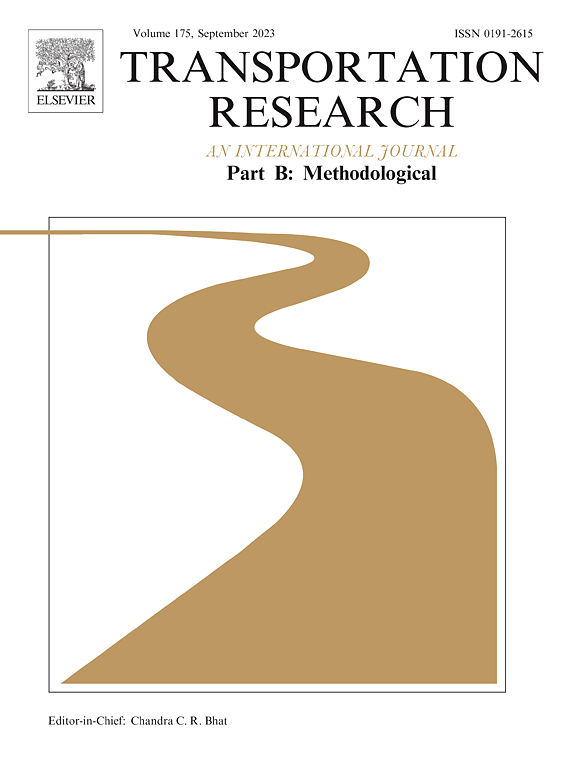一个可扩展的优化方法为公平的设施选址:方法和运输应用
IF 6.3
1区 工程技术
Q1 ECONOMICS
引用次数: 0
摘要
有效和公平地获得医疗保健、食品和教育等基本服务是城市规划、公共政策和运输物流的一个重要目标。然而,现有的设施选址模型往往不能很好地扩展到大型实例,或者主要侧重于优化平均可达性,而忽略了公平问题,特别是对弱势群体。本文提出了一种新的、可扩展的公平设施选址框架,引入了Kolm-Pollak等分布当量(EDE)度量的线性化代理,以平衡效率和公平性。计算实验表明,我们的方法适用于非常大的问题实例,同时足够敏感,可以解释整个分布的不平等,而不仅仅是通过最大值。此外,最优解决方案对于最贫困的居民来说,在与开放设施的距离方面有显著改善,同时也为所有用户实现了接近最佳的平均体验。一个关于超市访问的广泛的实际案例研究说明了该框架的实际适用性,还有来自轮询应用程序的其他示例。因此,该模型被扩展为处理现实世界的考虑因素,例如容量限制、需求分配和特定位置的惩罚。通过弥合公平理论与实践优化之间的差距,这项工作为城市规划、交通和公共政策的研究人员和实践者提供了一个强大而通用的工具。本文章由计算机程序翻译,如有差异,请以英文原文为准。
A scalable optimization approach for equitable facility location: Methodology and transportation applications
Efficient and equitable access to essential services, such as healthcare, food, and education, is an important goal in urban planning, public policy, and transport logistics. However, existing facility location models often do not scale well to large instances, or primarily focus on optimizing average accessibility, neglecting equity concerns, particularly for disadvantaged populations. This paper proposes a novel, scalable framework for equitable facility location, introducing a linearized proxy for the Kolm-Pollak Equally-Distributed Equivalent (EDE) metric to balance efficiency and fairness. Computational experiments demonstrate that our approach scales to extremely large problem instances, while being sensitive enough to account for inequity throughout the distribution, not merely via the maximum value. Moreover, optimal solutions represent significant improvements for the worst-off residents in terms of distance to an open amenity, while also attaining a near-optimal average experience for all users. An extensive real-world case study on supermarket access illustrates the practical applicability of the framework, with additional examples coming from polling applications. As such, the model is extended to handle real-world considerations such as capacity constraints, split demand assignments, and location-specific penalties. By bridging the gap between equity theory and practical optimization, this work offers a robust and versatile tool for researchers and practitioners in urban planning, transportation, and public policy.
求助全文
通过发布文献求助,成功后即可免费获取论文全文。
去求助
来源期刊
CiteScore
12.40
自引率
8.80%
发文量
143
审稿时长
14.1 weeks
期刊介绍:
Transportation Research: Part B publishes papers on all methodological aspects of the subject, particularly those that require mathematical analysis. The general theme of the journal is the development and solution of problems that are adequately motivated to deal with important aspects of the design and/or analysis of transportation systems. Areas covered include: traffic flow; design and analysis of transportation networks; control and scheduling; optimization; queuing theory; logistics; supply chains; development and application of statistical, econometric and mathematical models to address transportation problems; cost models; pricing and/or investment; traveler or shipper behavior; cost-benefit methodologies.

 求助内容:
求助内容: 应助结果提醒方式:
应助结果提醒方式:


